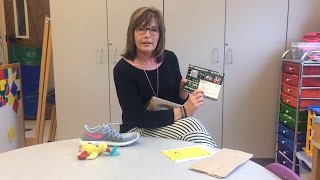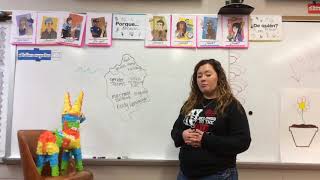Teaching Social Skills: Being a Good Friend
Becky O’Hearn | Wichita Collegiate School | Wichita, Kansas
This lesson introduces the concept of friendship and how to be a good friend using a story. The teacher also asks the students questions about their own friendship skills.
Read Transcript
Hi! Today I want to tell you one of the ways that I introduce friendship and reinforce the values and the skills of being a good friend to four to six-year-old’s. Young children come often to us with all different skill sets socially, and we want to make sure that we’re being intentional about instructing them, and guiding them, and giving them opportunities to experience some skill development in their friendships. What I like to introduce the topic with them is through a book called, “My Best Friend,” by Pat Hutchins. And in this particular story, these little girls are very fond of each other, and that’s why they call themselves best friends. And they’re going to have a sleepover. Well, there’s one friend who is actually really good at just almost everything, and she really excels at what she’s doing. And the other friend feels a little bit less capable and adequate, and she struggles with that a little bit. But as they’re going to bed that night, the friend who is so capable and so confident and so able is actually afraid of the dark. And the other friend gets an opportunity to shine, and she gets to say, “You know, I can help you with this.” And she comforts her, and she does things that are helpful, like she closes blinds, she gives her a hug, and she’s very reassuring. And in that moment, she realizes how important her skill sets are. And through that story, as you reflect on that as a class, you can ask the students some key questions that help them think about their skills as a friend. It’s common for all human beings to evaluate their own skill set and their own qualities and compare themselves to others, and so when you bring up a story like this, they go, “You know, I do feel that way sometimes,” and you can say, “What is it that you are good at?” And so, they can think on that. You can also ask them, “What can you do that’s really helpful to others?” And if you want to have more than just discussion about that and maybe have something that is tangible to, to culminate this activity, you could have them draw a picture of what they’re really good at, or the qualities in themselves that makes them a good friend, and then they have something to take home and discuss with their parents or to share with another friend. Oftentimes, four to six-year-olds cannot write out the words that say, “I’m a good friend in this way,” and that is just going to be too difficult for them, but they can draw a picture about it and you can give them an opportunity to tell you about what they have drawn. You can write down that dictation or you can just tell them to take their page and pair them up with another friend and have them tell the other friend what they’re good at as a friend, and then listen, because actually sharing and taking turns is a very important social skill that always needs practice. But I think you’ll find this activity to be meaningful for a four to six-year-old.
Help teachers and children
worldwide by sharing how
you teach.
A global movement of people sharing knowledge and learning from each other, to better educate our children and create hope for the world.
A global movement of people sharing knowledge and learning from each other, to better educate our children and create hope for the world.






